Carbon Monoxide (CO) Analyzers
Carbon Monoxide Gas Analyzer Models
Nova has capability for CO measurement using electrochemical and infrared methodologies. The choice of technology will depend on the application and the range of analysis required.
Our carbon monoxide analyzer can be supplied with a built-in sample pump or a pressure regulator to suit most applications.
We manufacture these carbon monoxide gas analyzer models:
Carbon Monoxide Gas Analysis
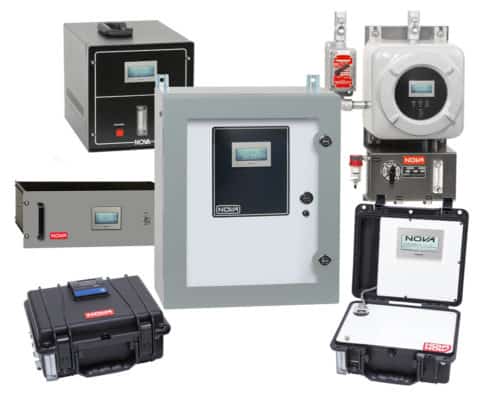 Carbon monoxide gas analysis is required in many industries and applications.
Carbon monoxide gas analysis is required in many industries and applications.
The off-gas stream that results from steel-making applications, such as EAFs, contains CO. Some metal heat treat applications utilize CO as a part of the carbon-containing atmosphere. The CO levels can be dynamically measured in these cases and is usually in the percent levels. Measuring CO in these applications may be important for energy balance, energy recovery, and maintaining product quality.
The toxicity of CO is one reason why a reliable air quality monitor may be required in a facility. Furnaces, boilers, combustion engines, and other processes may give off dangerous amounts of CO. The Permissible Exposure Limit (PEL, by Time-Weighted Average) of CO gas is currently 50 ppm over 8 hrs. Therefore, an air quality monitor that can provide analysis at the ppm level is important.
In combustion applications, such as boilers, furnaces, and heaters, CO measurement can be used with temperature and oxygen content to evaluate efficiency and burner performance. To tune a boiler for maximum efficiency and fuel savings, a portable CO analyzer with fine and coarse ranges is helpful.
The exhaust gas from internal combustion engines can be measured for CO content. Depending on the vintage of the engine, CO analysis on the percent or ppm range may be required. See this page for more info on engine exhaust analysis.
Ready for the next step? Please contact our Sales team for more information.
Or to provide us with more information about your application, please complete our Application Questionnaire and our Sales team will follow up with you promptly.
Types of CO Analyzer Sensors
In carbon monoxide analyzers, the sensors can be electrochemical or non-dispersive infrared (NDIR).
Electromechanical Sensors
Electrochemical gas sensors measure the concentration of a specific gas (e.g., carbon monoxide) using an electrical circuit. The assembly consists of a working (i.e., sensing) electrode, a counter electrode, and a reference electrode that sit within an enclosure with a gas-permeable membrane. It must be submerged within an electrolytic liquid to perform sensing operations, which proceed as follows:
- The gas passes through the housing membrane into the sensor.
- The gas reaches the working electrode, initiating an electrochemical reaction (reduction or oxidation, depending on the gas).
- The reaction initiates the movement of electrons between the working electrode and the counter electrode. In oxidation reactions, electrons move from the working electrode to the counter electrode. In reduction reactions, electrons move from the counter electrode to the working electrode. The current generated is proportional to the concentration of the targeted gas.
- The current is amplified and processed according to the calibration standards to provide a reading in percentage volume or parts per million (PPM). Detection of no target gas displays a zero.
NDIR Sensors
Non-dispersive infrared (NDIR) gas sensors measure the concentration of a specific gas using the light generated by infrared lamps. The sensing process proceeds as follows:
- The lamp generates infrared light and directs it toward the gas sample.
- The light moves through the gas particles and an optical filter into the infrared light detector.
- The detector receives the infrared light.
The difference between the amount of IR light generated by the light and the amount of IR light received by the detector is calculated. This value represents the amount of light absorbed by the gas molecules. Since gases have distinct absorption bands, it can be used to determine concentration of particular gas within the gas sample. The concentration is represented in percentage volume or parts per million (PPM).
Portable CO Analyzers at Nova Analytical Systems
We offer a range of portable CO analyzers. They are used in a variety of applications, including:
- Flue gas measurement. Flue gas analyzers help achieve and maintain optimal combustion operations in boilers, heaters, and furnaces. By measuring the concentration of specific gases, they allow operators to adjust the burners as needed.
- Engine exhaust analysis. Engine exhaust analyzers measure concentrations of target gas to aid in engine diagnosis and performance evaluations. CO is a byproduct of partially burned fuel. Measuring CO helps technicians evaluate the fuel-air mixture in an engine. Lean engines run with excess oxygen (O2), while rich engines run with excess fuel.
- Process gas analysis. Process gas analyzers are suitable for a range of light industrial process environments and laboratory applications. The analyzer offers simple operations for low-intensity applications. The clean and dry sample gas allows for less sample conditioning, allowing gas to return to the process after analysis if the sample pressure gradient and detector permit it.
Carbon Monoxide Analyzers From Nova Analytical Systems
Whether you need carbon monoxide analyzers for flue gas measurement, engine exhaust gas analysis, or process gas analysis, Nova Analytical Systems has got you covered! We create high-quality analytical devices that use electrochemical or NDIR methodologies, so you can choose the solution that suits your application and analysis range requirements.
To learn more about our product offerings, check out our carbon monoxide analyzer catalog or contact us today. For assistance choosing the right product for your carbon monoxide measurement needs, request a quote today.
 What Is Carbon Monoxide?
What Is Carbon Monoxide?
Carbon monoxide (CO) is a colorless, odorless, and tasteless gas that is slightly less dense than air. It is toxic to humans and animals because it interferes with the normal hemoglobin function of carrying oxygen to body tissues.
Carbon monoxide is the second-most common molecule in the interstellar medium, after molecular hydrogen. On earth, atmospheric CO is present in small amounts primarily as a product of combustion processes. This includes volcanic activity, fires, and fossil fuel burning. In urban areas, CO as an air pollutant originates from internal combustion engines and equipment that burns various fuels in an incomplete or inefficient manner.
Two industrial sources of CO are gasification and steel-making. Gasifier plants produce CO and H2 by reacting an organic feedstock material at high temperatures in an oxygen-deficient atmosphere. The resulting gas can be burned as a fuel. In electric arc furnaces, used in steel-making, CO is produced by various carbon reactions that occur during the melting process.

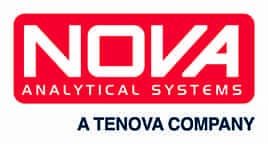


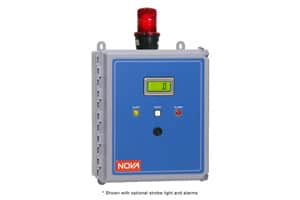
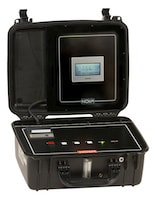
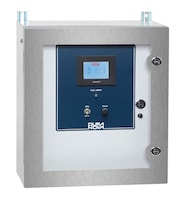

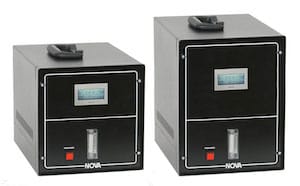
 What Is Carbon Monoxide?
What Is Carbon Monoxide?